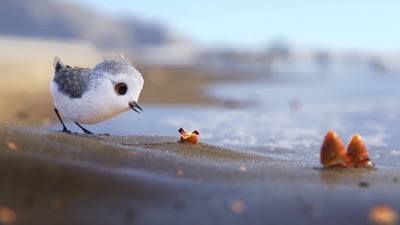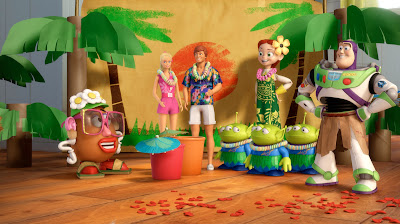Superheroes have come a long way into the 21st Century. In the past decade alone, there's been an undeniable oversaturation of comic-book-related feature films that either crossed over (we're looking at you, Marvel) or merely played off the success of one or more groundbreaking hits (Dark Knight, anyone?).
Back in the early-2000s, the subgenre--or rather, sub-medium--was in its relative infancy. Certainly as far as standalone entries or series were concerned. But while most other franchises were mere adaptations of previously-published source material, along came writer-director Brad Bird with an original concept: a computer-animated action-adventure-comedy about a family of superheroes in a world where heroics and superpowers are outlawed, and in which the family patriarch has a midlife crisis.
Okay, so a few similarities could be drawn from Watchmen and The Fantastic Four. But the execution and distinct wit of Bird's screenplay and direction were enough to win audiences and critics over with The Incredibles when it was released in November of 2004. And then some.
Bird had been brainstorming ideas for a sequel since then. The real question, though, was how to do something fresh in an era where Hollywood has exponentially been turning out numerous tentpole movies. Said the former Disney animator in 2018,
 |
| (L-r) Frozone, Elastigirl, and Mr. Incredible in Incredibles 2 |
[Back in 2004] The field was lush. It was well manicured. No one had played on it much. Spider-Man was over there, and then way on the other side was X-Men. There was room for us to move. It was really nice . . . And now it’s like a crowded subway with no air. . . . [For the second film] I was sitting there going, ‘In two years are people going to be sick to death of having superheroes every two seconds?' . . . And then I thought, ‘Well, wait a minute, the reason I made the first movie was not to do superpowers, but to comment on family. And that’s still very rich. So once I sort of reassured myself that that was really the core of the movie, I felt like there’s a lot of new stuff to explore there.
Picking up exactly where its predecessor left off, 2018's Incredibles 2 marks the fourth Pixar sequel in which a main and supporting character switch roles. For Cars 2, the star was Mater instead of Lightning McQueen. For Monsters University, it was Mike instead of Sully. For Finding Dory, it was the titular blue tang instead of Marlin the clown fish and his son Nemo. (You get the idea.) And now for Bird's follow-up, the spotlight turns to Helen Parr a.k.a. Elastigirl (voiced by Holly Hunter), who's called into action by a rich businessman and superhero enthusiast, who intends to change the general public's perception on superheroes. (Other costumed figures from around the world, like the over-excited and dimension-opening Void, have additional roles.)
Meanwhile, her husband, Bob a.k.a. Mr. Incredible (voiced by Craig T. Nelson), plays Mr. Mom for their three kids at home, including force-field-weilding daughter Violet (currently experiencing teenage romance and angst) and fast-running son Dash (whose grade school has been integrating new math into their curriculum).
But it's the adorable baby of the clan, Jack-Jack, who--spoiler alert--revealed his superpowers by the end of the last movie and steals the show this time around. As amusing and unpredictable of a character that he is, Jack-Jack is also a metaphor for how unpredictable and adaptable parenthood can be, and how important it is to get help from others when necessary.
 |
| (L-r) Elastigirl, Jack-Jack, Violet, Mr. Incredible, and Dash in Incredibles 2 |
The story takes a gripping turn with its central antagonist: the hypnotic, manipulative, and enigmatic Screenslaver, who dupes countless unsuspecting victims that apparently rely on superheroes--and technology and media, for that matter--to do all their good work. (After the film was first released, several theaters posted disclaimers about certain scenes that had flashing lights, especially for photosensitive audience members who have epilepsy.)
Incredibles 2 feels a bit low-key when compared with its predecessor. On the other hand, it should be commended for promoting healthy lifestyle choices when it comes to eating and school work. (How often do mainstream movies do that?) And while it could've used a better (more risky) payoff in its otherwise exciting climax, the film stands on its own as an entertaining, action-packed, and exceptional entry, with Bird's trademark wit, attention-to-detail, and emphasis on family.
As an added bonus, the old school supers (a.k.a. Mr. Incredible, Elastigirl, and Frozone) finally get their own catchy theme songs. Move over, Spider-Man and Batman.











































